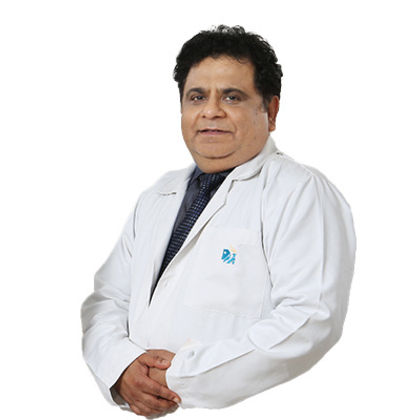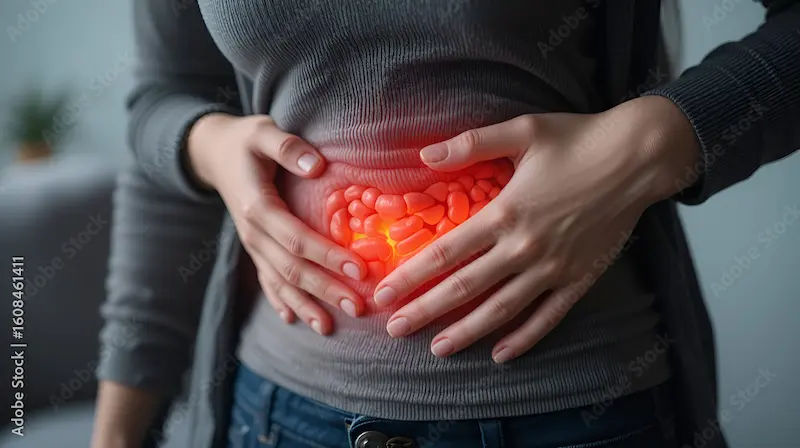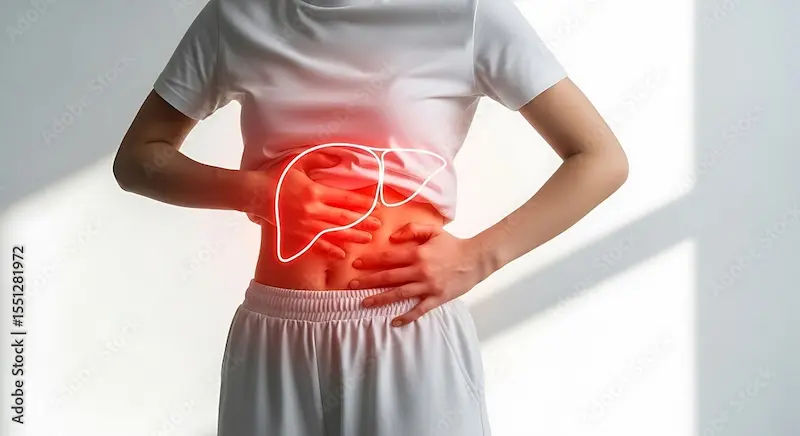Your Guide to Understanding and Treating Abdominal Pain
Explore the causes, symptoms, and treatment options for abdominal pain, with tips on self-assessment and guidance on when to seek medical help.


Introduction
Few things are as disruptive as a sudden ache or sharp pain in your abdomen. Is it something you ate? A sign of something serious? The uncertainty can be as stressful as the discomfort itself. This comprehensive guide is designed to demystify abdominal pain. We’ll walk you through a simple method to assess your symptoms, provide a location-based breakdown of potential causes and initial treatments, and clarify when it’s crucial to seek professional help. Our goal is to empower you with knowledge, so you can make informed decisions about your health and find the right path to relief. Remember, while this guide is informative, it's not a substitute for a medical diagnosis, especially for persistent or severe pain.
First Steps: Assessing Your Abdominal Pain
Before you try to pinpoint the exact cause, it's essential to perform a quick initial assessment. This helps you understand the severity and decide on the next steps, whether that's home care or heading to a clinic.
The S.O.C.K. Method: A Simple Self-Check
Think of S.O.C.K. to characterise your pain:
S - Site: Where is the pain located? Is it in one specific spot or spread out?
O - Onset: How did it start? Was it sudden and severe, or a gradual dull ache?
C - Character: What does it feel like? Is it sharp, stabbing, crampy, dull, or burning?
K - Key Symptoms: Are there other symptoms? Note any fever, nausea, vomiting, diarrhoea, constipation, or changes in appetite.
This method provides a clear picture that you can effectively communicate to a healthcare professional, whether you're describing it over the phone or in person.
Red Flags: When to Seek Immediate Medical Help
Certain symptoms paired with abdominal pain indicate a potential medical emergency. Do not wait; seek immediate care if you experience:
Pain so severe you can't sit still or find a comfortable position.
Pain that radiates to your chest, neck, or shoulder.
High fever (over 101°F or 38.3°C).
Signs of shock: rapid heartbeat, shallow breathing, cold/clammy skin, confusion.
A rigid, hard abdomen that is tender to touch.
Vomiting blood or passing bloody/black, tarry stools.
If your condition involves any of these severe abdominal symptoms, consulting a doctor online with Apollo24|7 for immediate advice or visiting an emergency room is critical.
Consult a Specialist for the best advice
Decoding the Pain: A Location-Based Guide to Causes and Relief
One of the most effective ways to narrow down causes is by location. Use this section as a map to guide your initial understanding.
Upper Abdominal Pain
Pain in the Upper Right Quadrant
This area houses your liver and gallbladder. A common cause here is gallstones. The pain is often described as a sudden, intense squeezing or cramping after a fatty meal. It may radiate to the back or right shoulder blade.
Initial Relief: Avoid fatty and greasy foods. Sometimes the pain passes as the gallstone moves.
Pain in the Upper Middle (Epigastric) Area
This is the zone of your stomach and duodenum. A burning sensation here is classic for indigestion (dyspepsia) or gastroesophageal reflux disease (GERD), often worsening after eating or when lying down. Peptic ulcers can also cause gnawing or burning pain.
Initial Relief: For acid-related pain, over-the-counter antacids can help. Eating smaller, more frequent meals and avoiding spicy foods may prevent episodes.
Pain in the Upper Left Quadrant
While less common, pain here can be related to the stomach, pancreas, or spleen. Severe, penetrating pain that bores through to the back can indicate pancreatitis, which requires immediate medical attention.
Lower Abdominal Pain
Pain in the Lower Right Quadrant
This is the classic location for appendicitis. The pain often starts around the belly button and migrates to the lower right side. It typically worsens with movement, coughing, or sneezing and is accompanied by fever and loss of appetite. This is a surgical emergency.
Important: Do not take laxatives or apply a heat pack if you suspect appendicitis, as this can rupture the appendix.
Pain in the Lower Left Quadrant
Pain here is often related to the large intestine. Diverticulitis—inflammation of small pouches in the colon—causes persistent pain, fever, and nausea. For some, constipation can also cause significant discomfort in this area.
Initial Relief: For diverticulitis, a doctor's visit is essential. For constipation-related pain, increasing fiber and water intake is key.
General Lower Abdominal/Pelvic Pain
This can be related to urinary tract infections (UTIs—often with a burning sensation during urination), menstrual cramps, or ovarian issues in women.
Initial Relief: For UTIs, drinking plenty of water is important, but antibiotics are usually needed. For menstrual cramp relief, a heating pad and over-the-counter anti-inflammatories like ibuprofen can be effective.
Generalised or Wandering Pain
Pain that doesn't stay in one place, or is felt across the entire abdomen, is often associated with viral gastroenteritis ("stomach flu"), gas, bloating, or irritable bowel syndrome (IBS). Stress and anxiety can also manifest as widespread abdominal discomfort.
Conclusion
Navigating abdominal pain can be challenging, but understanding the potential causes based on location and character empowers you to take the right steps. From simple indigestion to more serious conditions, the key is a careful and calm assessment. Start with the strategies outlined for common issues, but never hesitate to seek professional medical advice when needed. Your health is paramount, and timely intervention is crucial for serious conditions. Use this guide as a starting point for a conversation with your doctor, who can provide personalised care and treatment. For ongoing digestive issues, consider keeping a food and symptom diary to help identify triggers.
Consult a Specialist for the best advice
Consult a Specialist for the best advice

Dr. Chethan T L
General Physician/ Internal Medicine Specialist
5 Years • MBBS, MD, DNB (General Medicine)
Bengaluru
Apollo Medical Center, Marathahalli, Bengaluru

Dr. Siri Nallapu
General Practitioner
5 Years • MBBS
Hyderabad
Apollo 24|7 Clinic, Hyderabad

Dr. Rajib Ghose
General Physician/ Internal Medicine Specialist
25 Years • MBBS
East Midnapore
VIVEKANANDA SEBA SADAN, East Midnapore

Dr. Aakash Garg
Gastroenterology/gi Medicine Specialist
12 Years • MBBS, DNB (Medicine), DrNB (Gastroentrology).
Bilaspur
Apollo Hospitals Seepat Road, Bilaspur
(150+ Patients)

Dr. Anand Misra
General Physician/ Internal Medicine Specialist
14 Years • MBBS, DNB
Mumbai
Apollo Hospitals CBD Belapur, Mumbai




